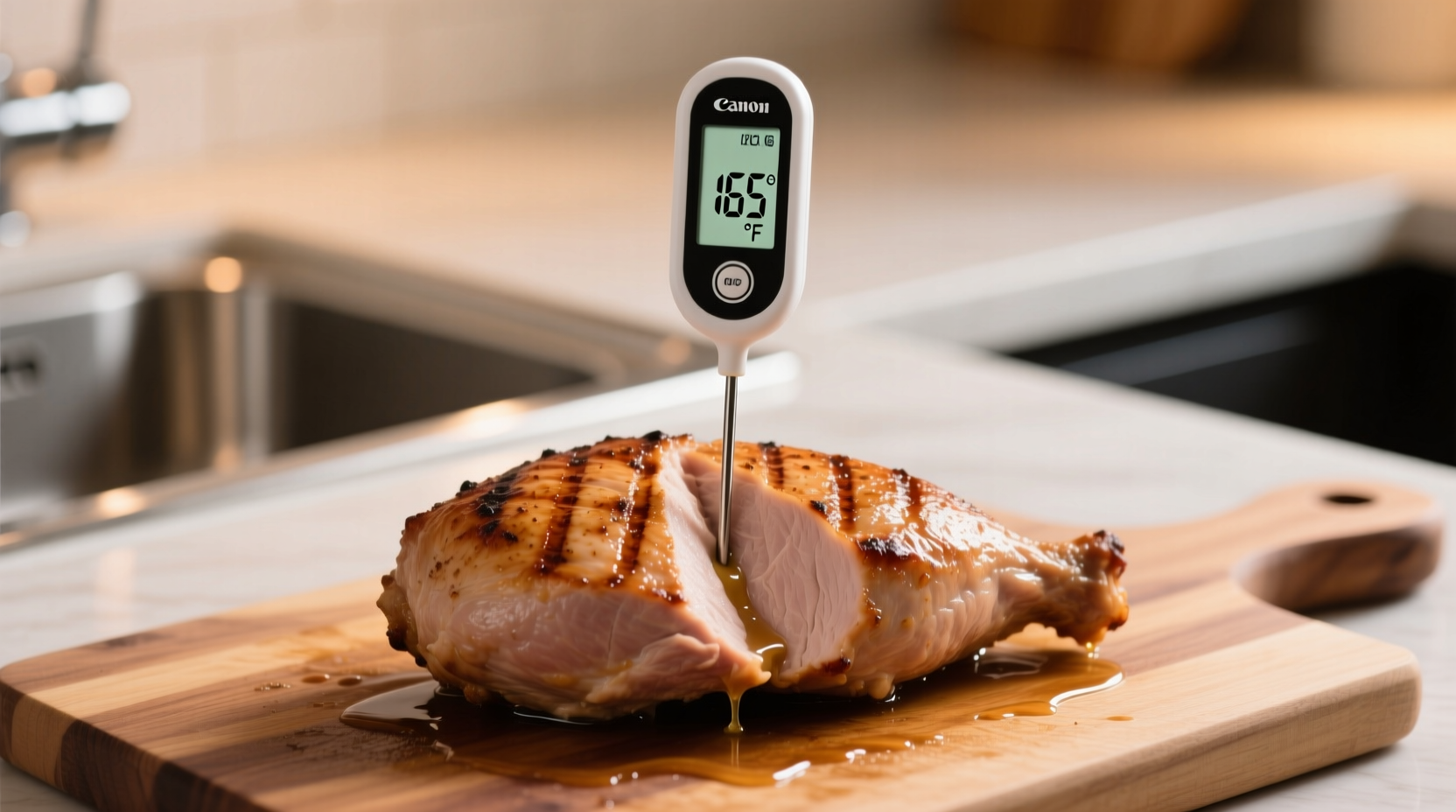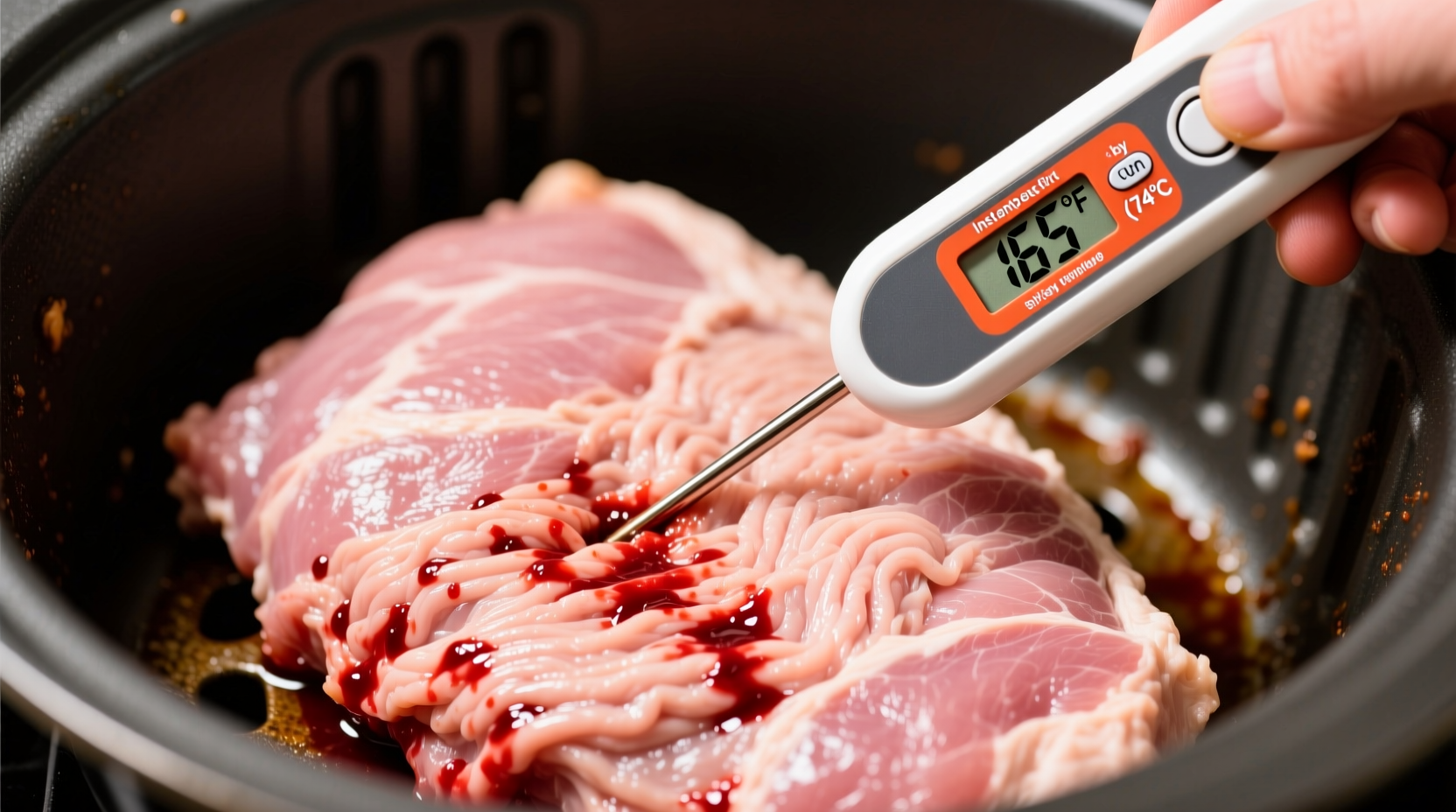The safe internal cooking temperature for ground turkey is 165°F (74°C). This precise temperature, verified by the USDA Food Safety and Inspection Service, eliminates harmful bacteria like Salmonella and Campylobacter while preserving moisture. Always use a food thermometer for accuracy—visual cues alone can't guarantee safety.
When you're preparing dinner and wondering cook ground turkey to what temperature, getting the answer right matters for both safety and quality. Undercooked ground turkey risks foodborne illness, while overcooked turkey becomes dry and unappetizing. This guide delivers the exact temperature standards, practical measurement techniques, and science-backed insights you need to cook ground turkey perfectly every time.
Why 165°F Is Non-Negotiable for Ground Turkey
Unlike whole turkey cuts, ground turkey requires special attention because the grinding process distributes surface bacteria throughout the meat. The USDA's Food Safety and Inspection Service (FSIS) mandates 165°F as the minimum safe temperature for all poultry products, including ground turkey. At this precise temperature, dangerous pathogens like Salmonella and Campylobacter—common in poultry—are completely destroyed.
Research from the USDA FSIS confirms that lower temperatures fail to eliminate these bacteria consistently. A study published in the Journal of Food Protection demonstrated that cooking ground poultry to just 160°F left viable Salmonella in 15% of samples, while 165°F achieved 100% pathogen elimination.
How to Measure Temperature Correctly: Avoiding Common Mistakes
Simply knowing cook ground turkey to what temperature isn't enough—you must measure it properly. Here's how:
- Use the right thermometer: Instant-read digital thermometers provide the most accurate results (within ±0.5°F). Dial thermometers require 15-20 seconds to stabilize.
- Test multiple spots: Insert the probe into the thickest part of the meat, avoiding bones or pan surfaces. Check at least three different locations in larger batches.
- Wait for stabilization: Keep the thermometer in place until the reading stops changing—usually 10-15 seconds for digital models.
- Clean between readings: Sanitize your thermometer probe with hot, soapy water between measurements to prevent cross-contamination.
Many home cooks make the critical error of checking temperature too early. Ground turkey continues cooking during the 3-5 minute resting period after removal from heat. For optimal results, remove turkey from heat at 160-162°F and let carryover cooking bring it to the safe 165°F mark.

Temperature Comparison: Ground Turkey vs. Other Meats
| Meat Type | Safe Minimum Internal Temperature | Special Considerations |
|---|---|---|
| Ground turkey | 165°F (74°C) | Must reach temperature throughout due to distributed bacteria |
| Ground beef/pork | 160°F (71°C) | Lower risk of pathogens than poultry |
| Whole turkey | 165°F (74°C) | Check thickest part of breast and inner thigh |
| Chicken breast | 165°F (74°C) | Easily overcooked if exceeding 170°F |
Why Visual Cues Fail for Ground Turkey Doneness
"The pink is gone, so it must be done" is a dangerous misconception. The USDA explicitly warns that color alone cannot indicate doneness in ground poultry. Factors affecting color include:
- Natural variations in myoglobin (the protein that gives meat its color)
- pH levels affected by added ingredients like marinades
- Cooking method (browning occurs at different temperatures)
- Presence of nitrites in some store-bought ground turkey
According to research from Colorado State University Extension, ground turkey can appear fully cooked (no pink) at temperatures as low as 140°F—well below the safe threshold. Conversely, properly cooked turkey may retain a slight pink hue due to the reaction between heat and naturally occurring compounds.
Practical Tips for Perfectly Cooked Ground Turkey
Now that you know cook ground turkey to what temperature, here's how to achieve optimal results:
Pre-Cooking Preparation
Bring refrigerated ground turkey to 40°F before cooking—never room temperature. Cold meat from the fridge (typically 35-38°F) helps maintain food safety during preparation. Pat the meat dry with paper towels to promote proper browning.
Cooking Process
Cook over medium heat (325-350°F surface temperature) in a preheated skillet. Breaking the meat into smaller, even pieces ensures uniform cooking. Avoid pressing down with your spatula—this squeezes out moisture and creates steam that lowers the cooking temperature.
Resting Period
Remove from heat at 162°F and let rest 3-5 minutes. During this time, the temperature will rise 3-5 degrees (carryover cooking) while juices redistribute. This critical step prevents dry, crumbly texture.
Special Considerations for Different Cooking Methods
Whether you're making turkey burgers, meatballs, or crumbles for pasta, the safe temperature remains 165°F, but technique varies:
- Stovetop: Stir frequently for even cooking. Check temperature in multiple spots.
- Baking: Use a shallow pan for even heat distribution. Rotate pan halfway through cooking.
- Instant Pot: Natural release for 10 minutes helps retain moisture after reaching temperature.
- Grilling: Create thinner patties for faster, more even cooking to prevent exterior charring before interior reaches 165°F.
Food Safety Beyond Cooking Temperature
Proper temperature is just one element of safe ground turkey preparation. Follow these additional guidelines from the USDA FSIS Poultry Guidelines:
- Store ground turkey below 40°F and use within 1-2 days of purchase
- Never thaw at room temperature—use refrigerator, cold water, or microwave methods
- Clean all surfaces that contact raw turkey with hot, soapy water
- Consume cooked turkey within 3-4 days or freeze for longer storage
Remember that food safety doesn't end at 165°F. Bacteria multiply rapidly between 40°F and 140°F (the "danger zone"), so keep cooked turkey above 140°F if serving buffet-style, or refrigerate within two hours (one hour if ambient temperature exceeds 90°F).
When Temperature Guidelines Might Vary Slightly
While 165°F remains the official recommendation, certain controlled circumstances allow for minor variations:
- Commercial settings: Restaurants following HACCP plans may use 158°F with 15.2 seconds hold time, verified by the FDA Food Code.
- Sous vide cooking: Precise temperature control allows cooking at 150°F for 2+ hours, though this method isn't recommended for home cooks without proper equipment.
- High-acid environments: When combined with acidic ingredients (like tomatoes in sauce), some food scientists suggest slightly lower temperatures may be safe, but the USDA still recommends 165°F for home kitchens.
For everyday home cooking, always default to the 165°F standard. These exceptions require specialized knowledge and equipment that most home kitchens lack.











 浙公网安备
33010002000092号
浙公网安备
33010002000092号 浙B2-20120091-4
浙B2-20120091-4